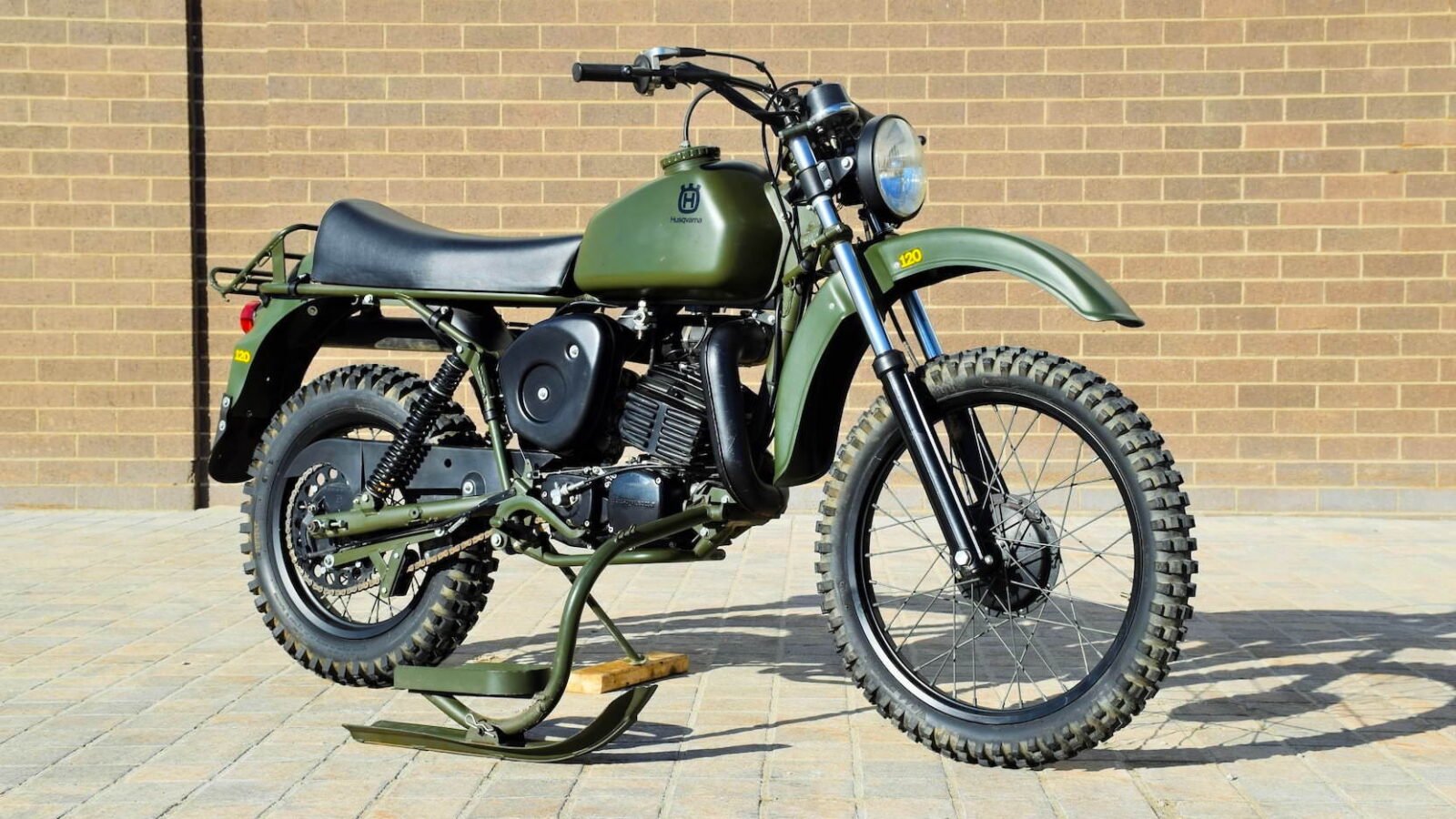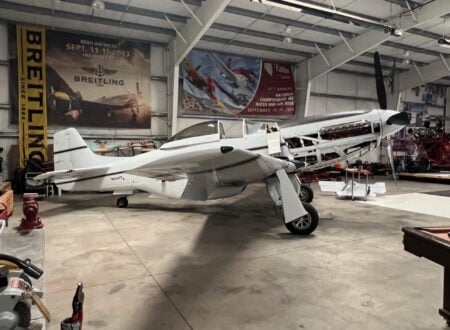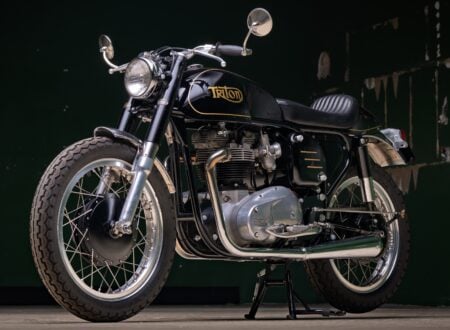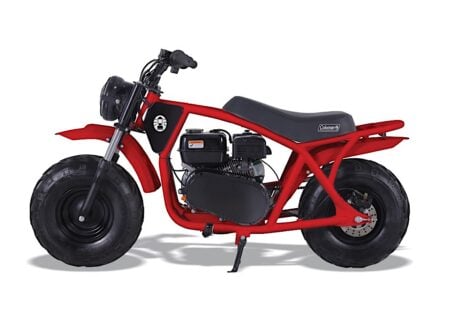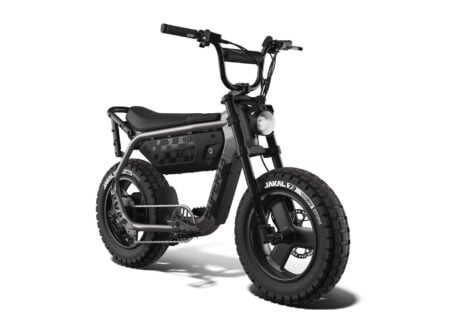It’s thought that just 3,000 or so examples of the Husqvarna Model 258 military motorcycle were ever built, they were developed specifically for the Swedish armed forces who already had a long history of ordering equipment from Husqvarna – though most of this equipment had been firearms-related.
Rather than just taking a civilian motorcycle and attempting to militarize it, the Model 258 was the result of a blank slate design to best suit the oftentimes snow or mud covered forests of Sweden.
The Husqvarna 258 could be equipped with skis fitted to each side to help with stabilization, turning the bike into a snowmobile of sorts, and the engine had been designed so that it would stay running even when the bike was laid on its side.
When the Swedish armed forces announced a “Request for Proposal” for 3,000 motorcycles in 1971 they went to Husqvarna, who had already supplied the military with motorcycles previously, and to some other competing manufacturers.
These new motorcycles had to be lightweight, off-road capable, they had to be capable of having skis fitted, they needed to be able to carry two soldiers and their gear, and perhaps most interestingly, they needed to have automatic transmissions.
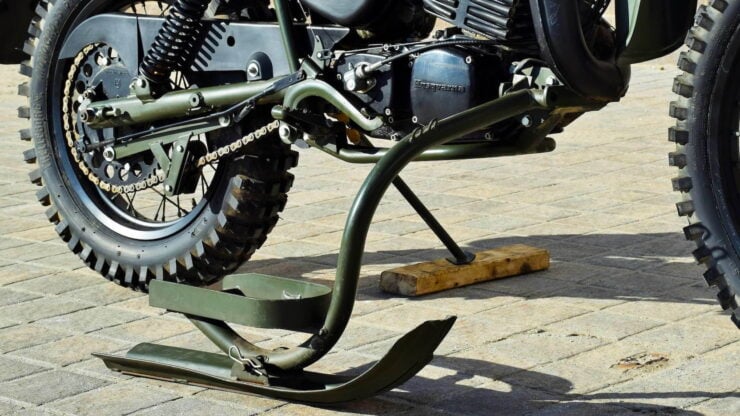
Above Image: The motorcycle has removable steel skis that can be folded down for use on snow and then removed in summer.
This final requirement for an automatic transmission was made because it had been noted that new recruits often struggled to master gear changing on motorcycles particularly when riding through difficult terrain, leading to burned out clutches and a propensity for accidents.
By removing the standard clutch and instead using a centrifugal clutch this problem was largely eliminated, and the performance deficit was considered minimal.
Interestingly the Husqvarna Model 258 wasn’t originally a Husqvarna design, rather it was designed by Hägglund. Both the Swedish companies had been competing for the military contract and it had been the Hägglund design that was chosen – however it quickly became apparent that Hägglund didn’t have the facilities to produce the motorcycles quickly enough in the numbers required.
As a result of this, Husqvarna and Hägglund were ordered to work together. The motorcycle design was modified somewhat by Husqvarna engineers to allow them to use many of their own pre-existing parts, as a result the motorcycles didn’t start being delivered until 1980.
The final design for the Husqvarna Model 258, sometimes referred to the as the Model 258A, utilized a single-cylinder 250cc two-stroke engine with air-cooling and the aforementioned automatic transmission.
Above Video: Amateur footage of the Model 258 in action on the snow using its skis.
Final drive was by chain to the rear wheel, brakes were drums front and back, and the engine uses a single carburetor and a single high-exit exhaust.
Over the course of the production run Husqvarna built approximately 3,000 examples of the 258, though they’ve been replaced by newer motorcycles in the military now many of them are still active in the Voluntary Motorcycle Federation, a volunteer Swedish defense association.
Due to the relatively low production numbers and the rough life led by many of the original bikes, it’s not often we see original Husqvarna 258s come up for sale. The bike you see pictured here is a 1982 model that is presented in excellent cosmetic condition throughout. Its original color and all of its original fittings appear to be in place, and it’s even wearing its original army tires.
The odometer is currently showing 47 kilometres so while the listing doesn’t tell us much, it’s probably safe to assume that this bike is either unused new-old-stock or that it’s received a restoration at some point in its life.
If you’d like to read more about this unusual Husky or register to bid you can click here to visit the listing, it’s due to roll across the auction block with Mecum in late April and it’s being offered with no reserve.
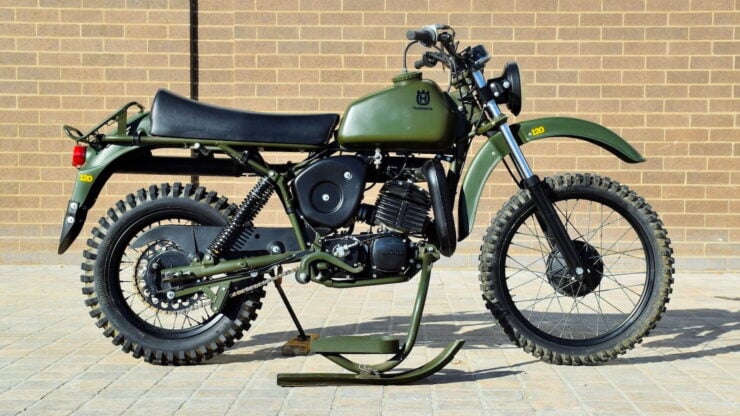
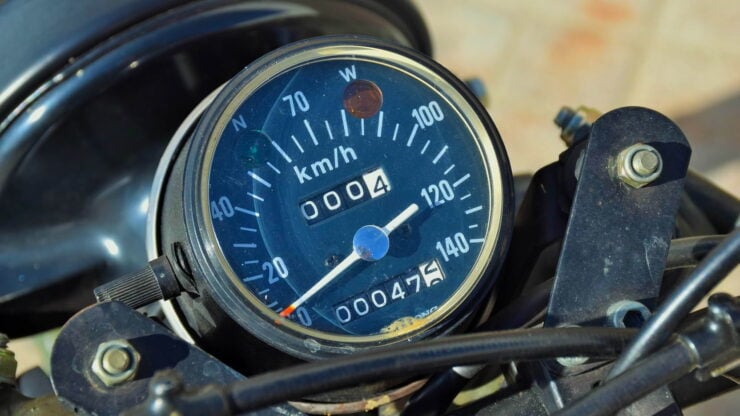
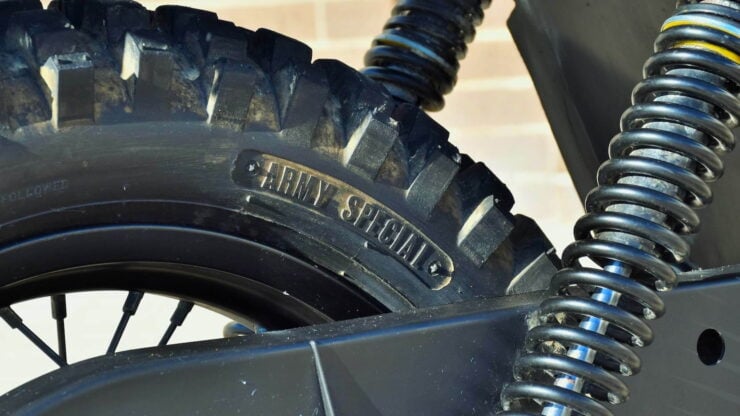
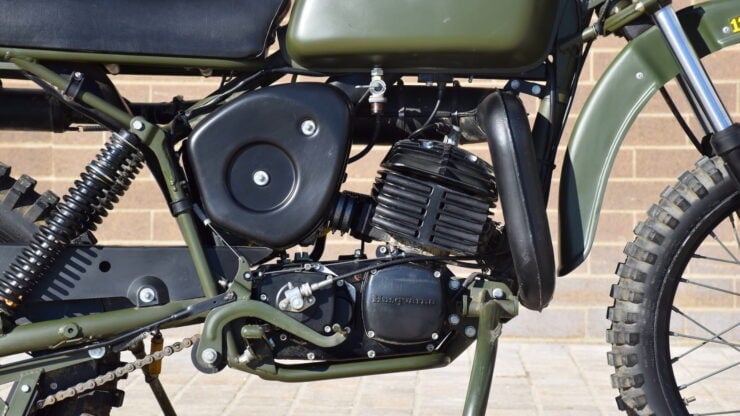
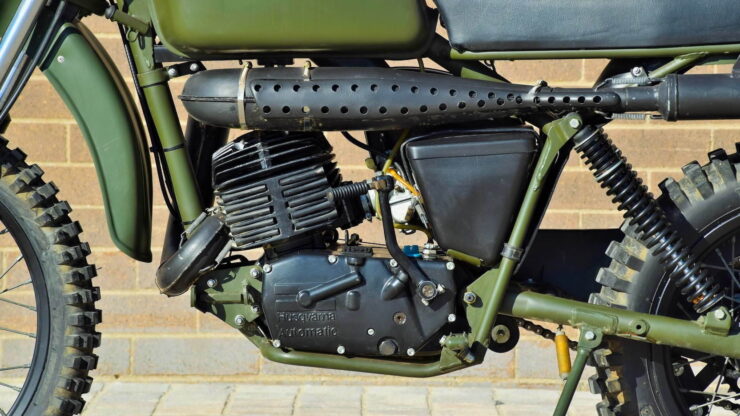
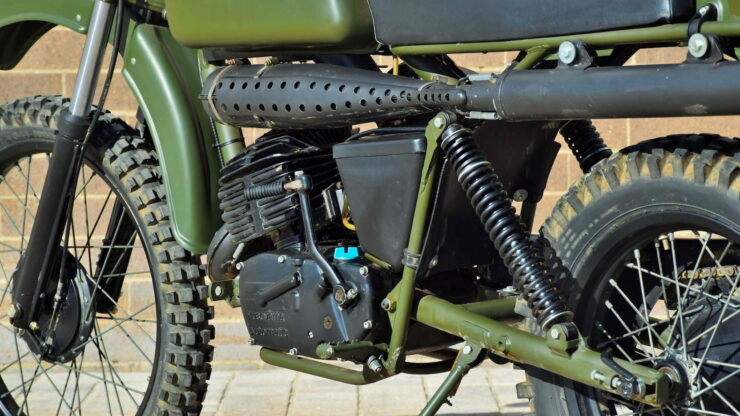
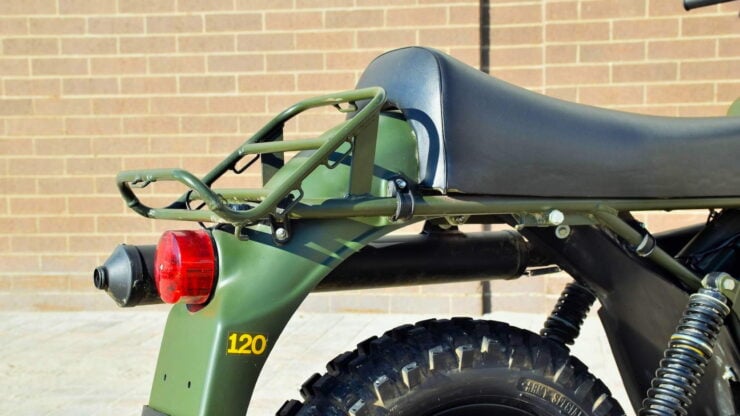
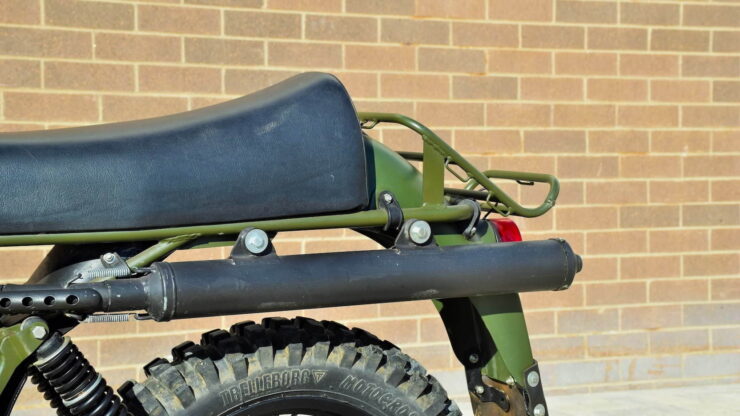
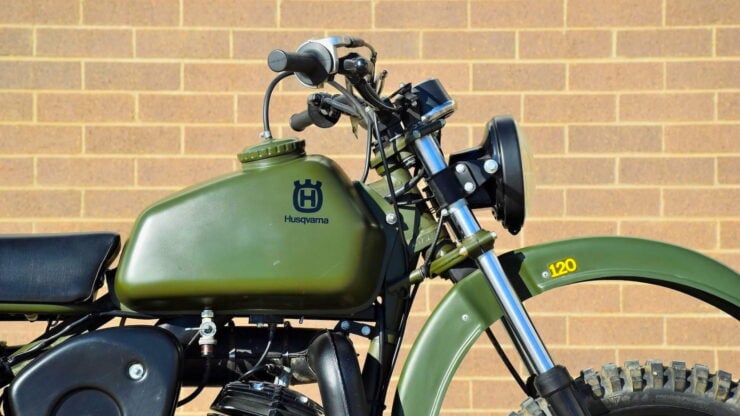
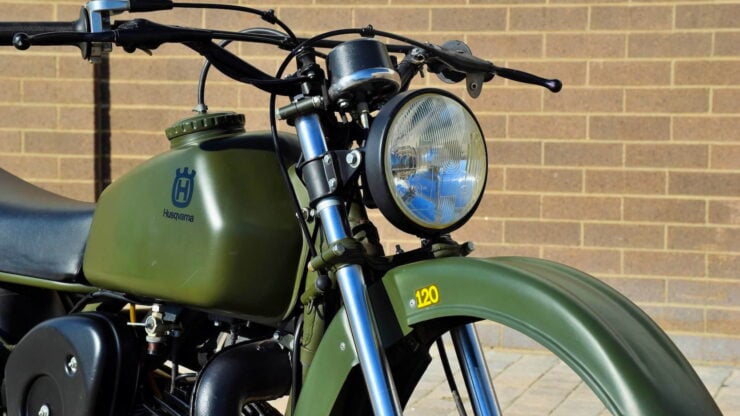

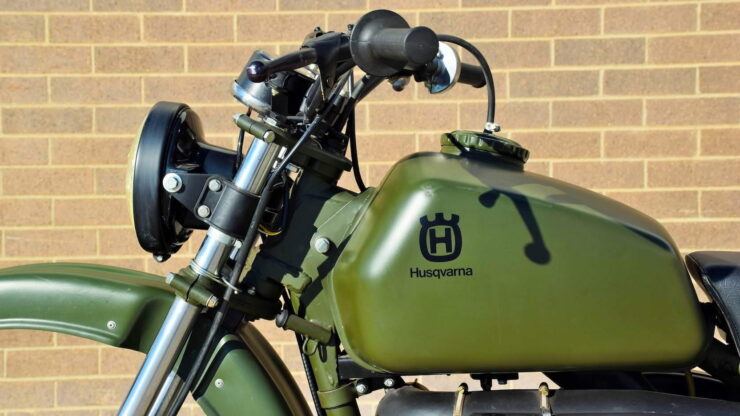
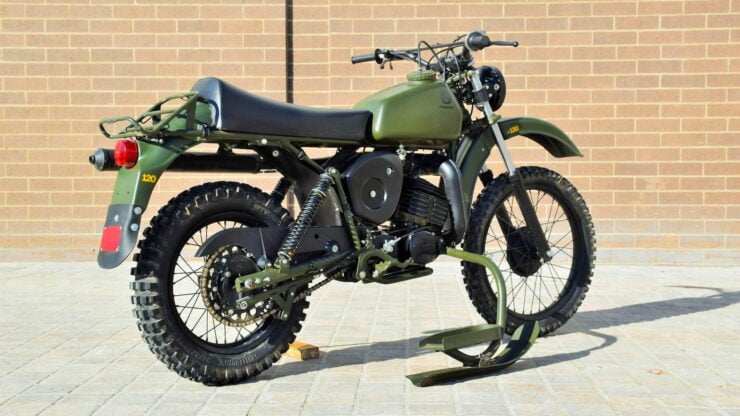
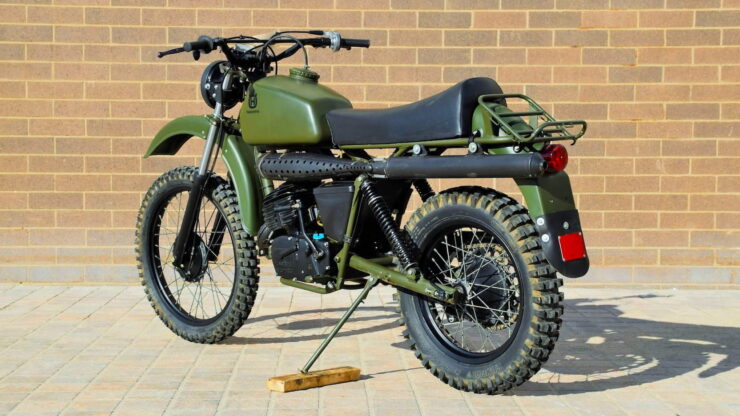

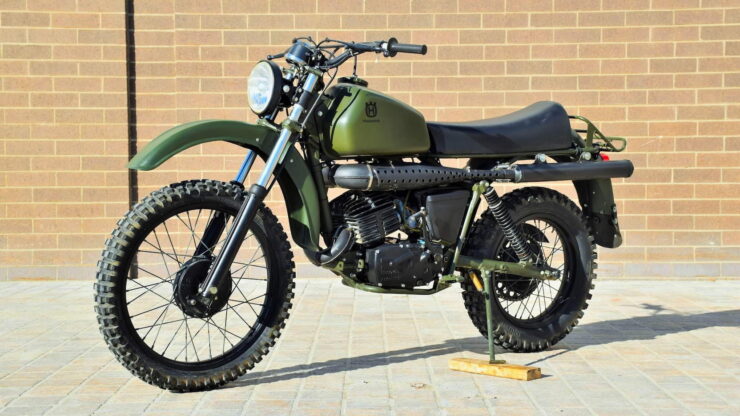
Images courtesy of Mecum

